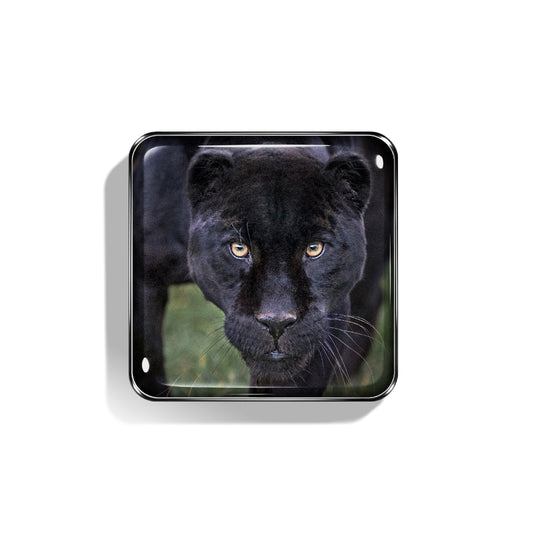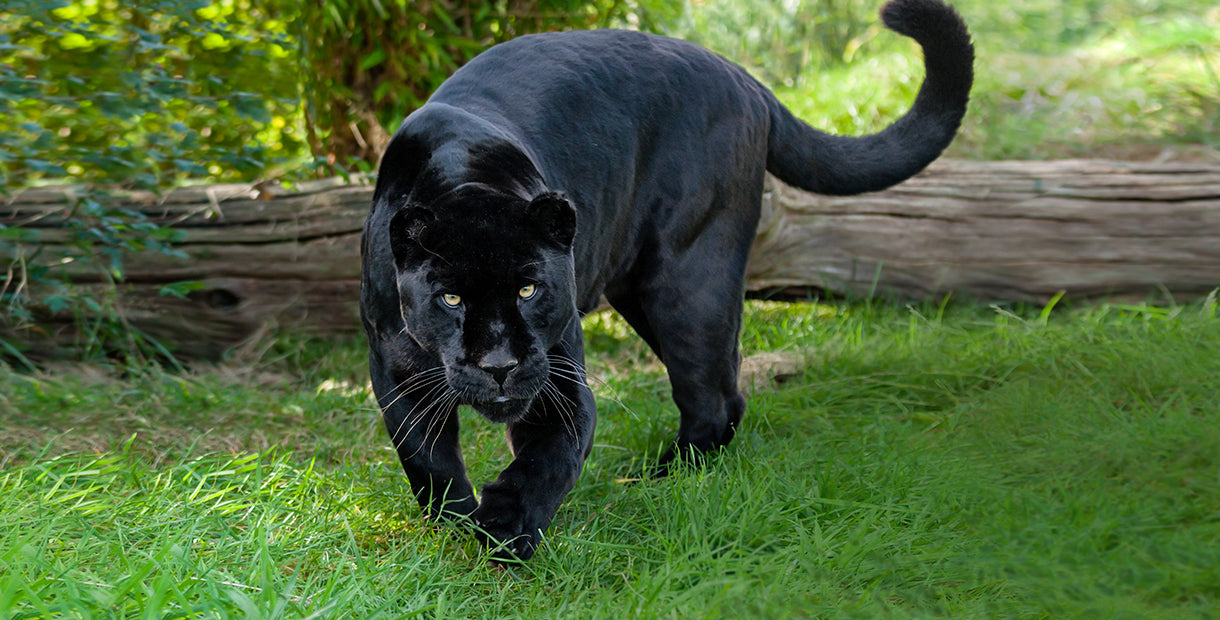
A black jaguar
Protecting the Mysterious Black Jaguar
The Amazon Sacred Headwaters Initiative has an ambitious plan to conserve the birthplace of South America’s mighty river—and every living thing in it.
When it comes to the Amazon rainforest, it’s critical to think big. Very big. This ecosystem, which is threatened by deforestation and pollution from drilling, mining, and agriculture, doesn’t just contain the most biodiverse hotspot on Earth, but functions as the heart and lungs of our planet, generating rain and helping to regulate global weather patterns.
One of the biggest thinkers we know is Atossa Soltani, Director of Global Strategy of the Amazon Sacred Headwaters Initiative. A longtime eco-activist—she previously founded the NGO Amazon Watch—Atossa and other allies banded together in 2017 with 30 indigenous nations to draw up a plan to protect the entire Amazon headwaters region of Peru and Ecuador together, rather than fighting individual battles. The Sacred Headwaters Initiative aims to permanently protect this ecologically critical bioregion in the headwaters of the Amazon River—which also happens to be home to the highest density of jaguars in the world, including the elusive black jaguar, a sacred totem among the indigenous peoples who live there.
Our Black Jaguar Eye Quartet supports their efforts. We asked Soltani to explain the scope of the project and where our donation will be going.
“We created the Amazon Sacred Headwaters Initiative to permanently protect 86 million acres in the headwaters of the Amazon.”
Just how big is this headwaters area and what is its significance?
We created the Amazon Sacred Headwaters Initiative to permanently protect 86 million acres in the headwaters of the Amazon. It's the territories of 30 indigenous nations as well as non-indigenous unprotected areas, an area the size of Oregon. Indigenous peoples have done a great job for centuries keeping out outsiders and stopping roads and oil projects. The idea is to keep it that way and to also restore the other areas that have been destroyed—to bring those lands back into healing and integrity.
When you zoom out and look at the entire watershed, you realize these rivers are born in the glaciers in the Andes and fall into the low-land rainforest, and the entire transect is the most biodiverse place on earth. The whole thing works as a system of recirculating water and moisture. Zoom out even further, and you see that the Amazon rainforest as a whole is the heart of the hydrologic climatic system of the biosphere of our planet. The Amazon serves as literally the heart and the lungs of Mother Earth, as trees evapo-transpire moisture and vapor into the sky and create atmospheric rivers that circulate the rain not only in the rainforest, but all the way south to Argentina and Southern Brazil, and all the way north to California.
What we're trying to establish is that the source of the Amazon is not only the most biodiverse place on earth, but also key to maintaining this whole hydrological system.
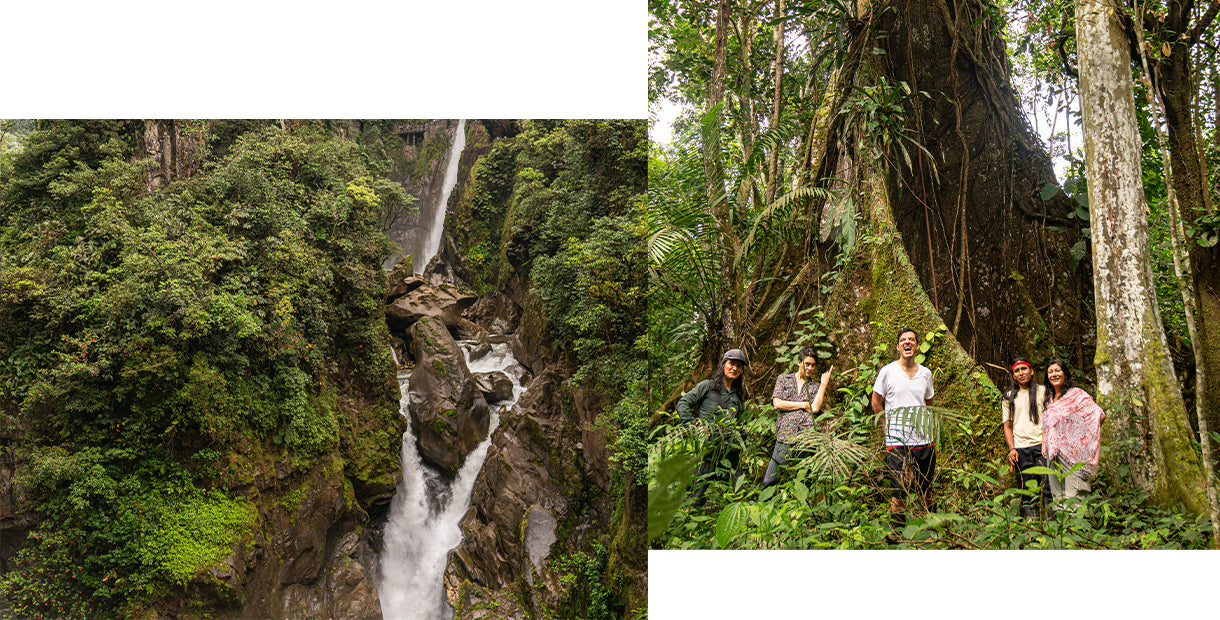
Waterfall El Pailon del Diablo in Ecuador (L), The Amazon Sacred Headwaters team, including Atossa Soltani at the far right, in the Ecuadorian Amazon (R)
Who lives in this area and what are their biggest concerns and priorities?
There's over three and a half million people who live in this landscape. Of those, about 600-700,000 people are indigenous, belonging to 30 different indigenous nations. They protect millions of acres of territories. In Ecuador, they have title to their ancestral lands. In Peru, they are still working to have most of their territories recognized. So that's also part of our work, to help secure land rights for indigenous peoples, because we have found that indigenous peoples are the best guardians of the forest—deforestation rates in indigenous territories are even less than those in national parks.
About half of the headwaters region is indigenous lands, and maybe another 10 to 20 percent is national parks and other reserves. But you also have 2.8 million people living in small frontier jungle towns that are springing up, home to both non-indigenous and indigenous people. These are usually places where mining and logging industry workers live, and there's a lot of push for those kinds of extractive industries to create jobs. These frontier jungle towns are also centers for illegal wildlife poaching, illegal logging, and illegal mining; they are sources of solid waste and toxic and sewage waste. So part of the work we're doing includes addressing sustainability pathways for those jungle towns, as well as protecting the primary, pristine forests that are roadless and well conserved and belong to the indigenous territories or protected areas.
“Part of our strategy is to support livelihood alternatives that allow communities to have basic needs met while protecting their forests.”
How do you incentivize people away from those extractive jobs?
Part of our strategy is to support livelihood alternatives that allow communities to have basic needs met while protecting their forests. Indigenous people mostly live off the land, cultivate their own food, they fish and hunt and have a good amount of food security. They have demonstrated that if they have their basic needs met, they will continue to be very committed to the permanent protection of their territories.
They consider the forest to be alive, where both the visible animals and plants as well as the invisible—the spirit of their ancestors, the spirit of forests exist. They live by their divine cosmology, seeing their land as sacred, and they're willing to protect the forest at all costs. So if their basic needs are taken care of, they're committed to protecting the forest, just as indigenous people have for millennia.
Our pillars are multi-pronged strategies: how we deal with food systems; with healthcare and education; with reforestation and connecting fragmented areas; with internet connectivity solutions for remote communities; with renewable energy so they can get off fossil fuels in their territories; with improving access to education. Many of the youth have to leave their territories for the cities to get an education, and that's when they lose their culture and become victims of drug abuse or violence. We’re also looking at how to bring a more relevant education that meets the needs of someone who is living in and guarding the forest.
And we're looking at livelihoods. How do we help indigenous people not only have food security for themselves, but also have a surplus that they can sell to fund things like their kids' education or medical care? Ecotourism is a very viable economic model, so in the lower Pastaza, where we have some of the highest populations of jaguars, we're helping communities develop their ecotourism potential. To be able to provide unique cultural tourism that allows outsiders to come not only to see the beautiful rainforest, but to learn the indigenous knowledge about plant medicines, rituals, their understanding of humanity and our purpose here. I call it “cultural wisdom tourism.”
We're also looking at products that indigenous people can create that add value and livelihoods, but aren't so difficult and expensive to transport, like vanilla, which is native to this region. Also, essential oils for perfumes from many flowering trees, medicinal trees, herbs, cacao. There are many heirloom products in the forest.
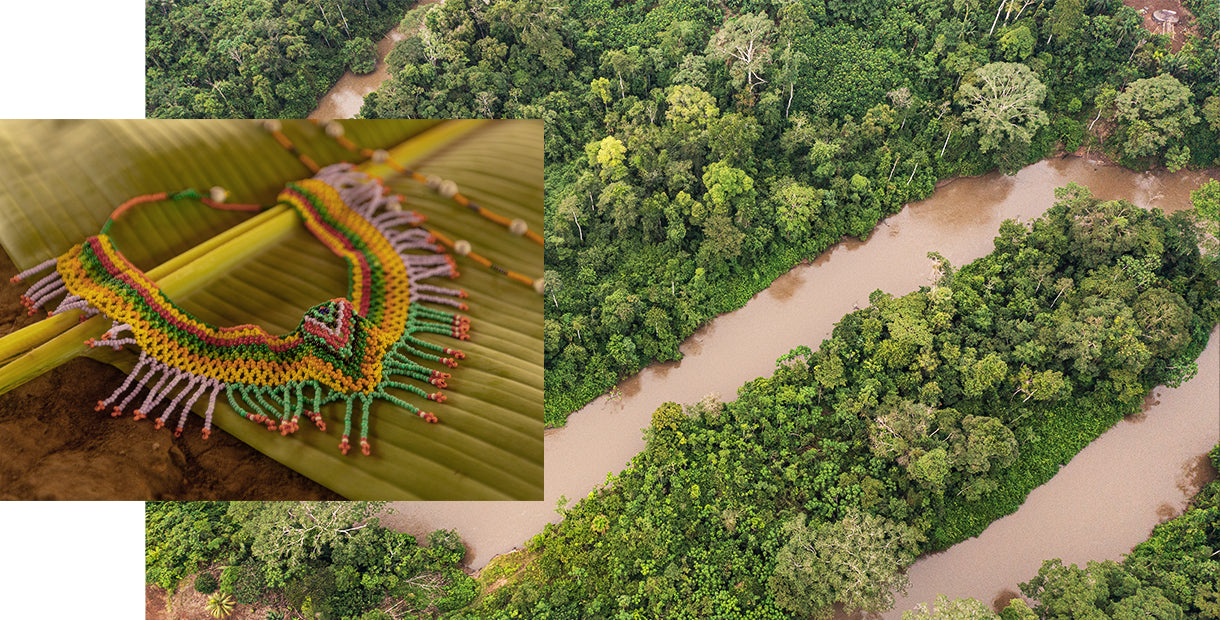
Handmade jewelry from the women at the Wayusentza community in the Amazonian rainforest; the Pastaza River, Ecuador.
How are you addressing the destruction of the forests that has already happened?
Although much of this area is pristine, the areas that have been destroyed have been really destroyed. So, oil drilling after 40, 50 years has contaminated and polluted huge areas, deforested millions of acres. There's a huge drive to want to restore and heal this land, so restoration is also part of our strategy: toxic cleanup, reforestation, repairing river basins and habitats, creating jobs from healing the earth. Some of that requires investments from polluters. So we have legal actions and demands to governments for reparations and for restoration. This can also create jobs and economic flourishing.
And then to give you a sense of the biodiversity here, in one hectare or football field of rainforest in Ecuador, for example, there are more different species of trees than in all of North America, the US and Canada combined. This area is so rich with life and so incredibly valuable from a perspective of nature and diversity, but we're losing about seven football fields a minute. And once that area's gone, it really truly is gone. You can restore forest, but never at the same level of biodiversity, or richness. So one of the main tenets of our initiative is also advocacy, citizen and indigenous people's actions to force their governments to stop giving out oil and mining licenses. To stop giving more green lights to build dams and roads. Stopping the bad. That’s always been part of the strategy.
Zooming in, where in this region do you find the highest concentration of jaguars?
While there are jaguars throughout the headwaters, the Napo River and the Pastaza River basins in Ecuador have some of the highest populations. In Napo, there's a wildlife station inside Yasuni National Park, a 2.5 million-hectare rainforest—which has oil projects in it right now, by the way; it’s being destroyed. Scientists have run camera traps and concluded that this area has one the highest populations of jaguars in all of South America. In southern Ecuador and northern Peru it's mostly indigenous land and very few scientific studies have been done. One of our goals is to encourage universities to help establish a center for studying forest conservation in the territory of the Achuar [the indigenous nation here], on the border with Southern Ecuador and Peru, near the ecotourism lodges. We suspect that it is a huge hotspot for wildlife, including jaguars. I personally have seen Jaguars there!
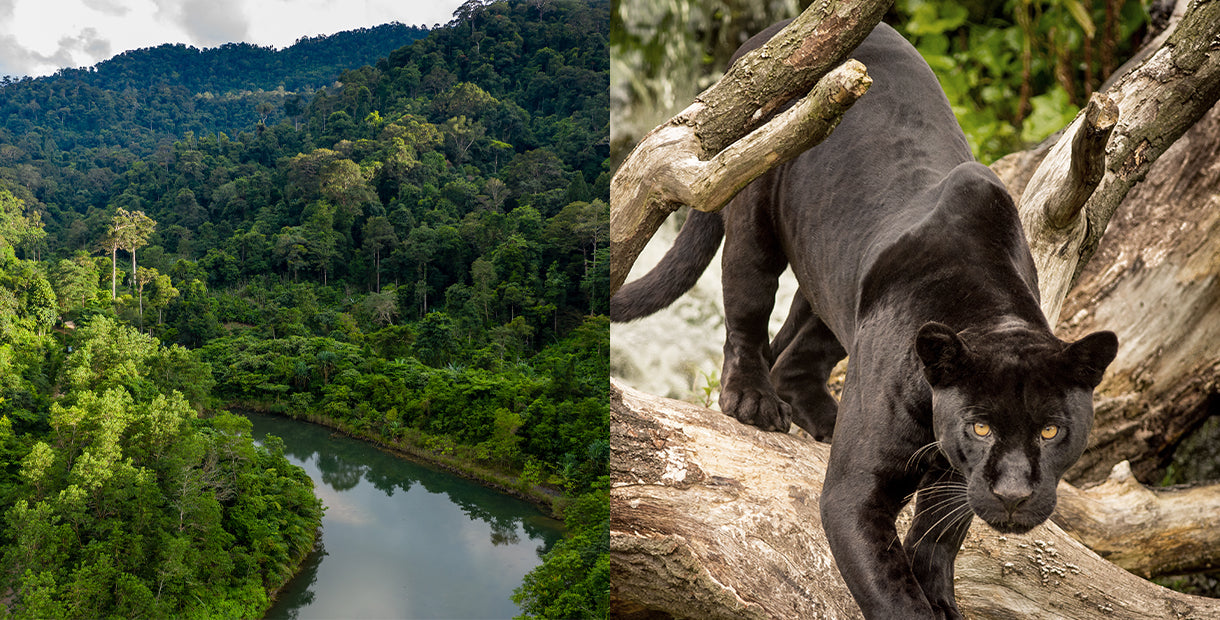
All photos courtesy of the Amazon Sacred Headwaters Initiative
Chantecaille’s donation will go towards purchasing camera traps as part of the broader effort to help indigenous peoples protect their habitat. Can you tell us more?
One of the things we want to do with the funding from Chantecaille is to help support communities in creating management plans for their territories: doing spatial mapping with drones and satellite imagery so they can figure out where they are going to grow food, where their protection zones and wildlife corridors are. Once the community has bought in, this will be one of the best ways to ensure that the territories are managed for wildlife. Another is monitoring: using drone footage and satellite imagery as well as physical monitoring to stop the poachers and the loggers and illegal miners. Indigenous people need a way to monitor and document what's happening, and to respond. They are proposing indigenous guards in each region, like park guards. We need to help indigenous people have the resources to monitor, to know poachers are there, to respond and take action to protect their territories.
Can you speak to the connection that the Achuar and the other indigenous people have with the Jaguar, both culturally and spiritually?
The Anaconda and the Jaguar are both very sacred; pretty much all shamans who practice medicinal plants and ceremonies strive to become a powerful shaman who can shape-shift into a jaguar. They also see the jaguar as the guardian of the forest. It's the most powerful force that a shaman can embody in healing their patients. And there's a lot of legends about the jaguar in every culture. One of the cultures that we work with in this area is the Kichwa and many of their communities believe that they are the descendants of the jaguar, that they were born from the jaguar, that’s their lineage.
What is your hope for what a flourishing Amazon will look like?
There's a beautiful video we made exactly about this, Amazonía 2041. We stem the tide. We get to zero deforestation and we address the issue of species extinction. We have a moratorium on extractive industries. Another 20 million acres of rainforest are restored. Communities are flourishing with schools and education powered by the internet and solar and in a way they don't have to send their kids off to some distant city, because there's jobs for communities to stay local and work in their territories. And we will have received debt relief and stronger government investments in protection of the forest. The economy will be based on forest protection as opposed to forest destruction. We work on enhancing conditions for wildlife, enhancing conditions for communities. With better food systems, communities can reduce their hunting of wildlife, and that increases the resilience of the whole ecosystem. Indigenous youth are empowered with technology and are the guardians of the forest. We have a huge vision. We invite people to join us in helping make this dream a reality.
Shop The Story



